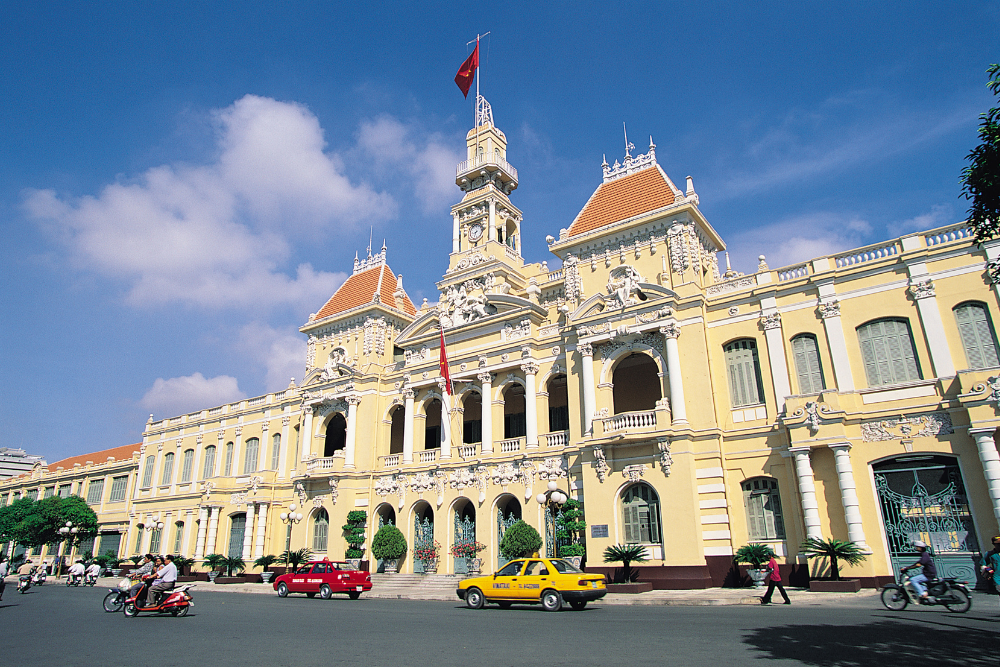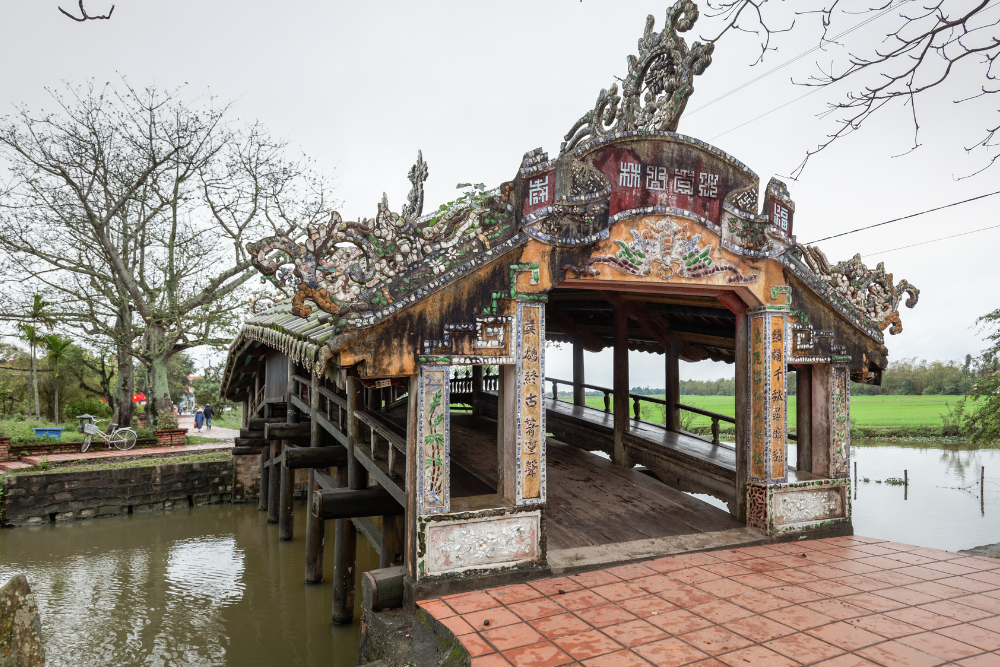Hue, the former imperial capital of Vietnam, is a city steeped in rich history, culture, and heritage. Situated on the banks of the Perfume River, this ancient city is home to some of Vietnam’s most iconic historical landmarks, offering a fascinating glimpse into the country’s royal past. From majestic palaces to tranquil temples, Hue’s historical landmarks tell the story of a bygone era that shaped the cultural landscape of Vietnam. If you’re planning a visit to this enchanting city, here are the Top 10 Historical Landmarks You Must Visit in Hue.
1. Imperial City (The Citadel)
Why It’s a Must-See:
The Imperial City or The Citadel is Hue’s most iconic historical landmark. This massive complex served as the political and cultural heart of the Nguyen Dynasty, housing the imperial family and the court for over a century. The Citadel is a UNESCO World Heritage site and a symbol of Vietnam’s royal history.
What to Expect:
- Main Attractions: The Forbidden Purple City, Ngo Mon Gate, Thai Hoa Palace, and the Royal Theatre are some of the key structures within the Citadel.
- What to See: Visitors can explore the expansive walls, moats, temples, and palaces, many of which have been carefully restored, offering a glimpse into the imperial lifestyle.
Why Visit:
The Citadel is a must-see for its impressive architecture and historical significance, making it an essential part of any Hue itinerary.
2. Thien Mu Pagoda
Why It’s a Must-See:
Located on a hill overlooking the Perfume River, Thien Mu Pagoda is one of the oldest and most famous religious landmarks in Vietnam. This seven-story pagoda is not only a symbol of Hue but also an important Buddhist site.
What to Expect:
- Historical Significance: The pagoda was built in 1601 and has been a center for Buddhist worship ever since.
- What to See: The towering pagoda, its surrounding gardens, and the peaceful view of the Perfume River. Inside the pagoda, you can find a large bronze bell and several altars dedicated to various Buddhist deities.
Why Visit:
Thien Mu Pagoda offers a serene atmosphere and breathtaking views, making it one of Hue’s most picturesque and spiritually significant landmarks.
3. Tomb of Emperor Tu Duc
Why It’s a Must-See:
The Tomb of Emperor Tu Duc is one of the most beautiful and well-preserved royal tombs in Hue. It was built for the fourth emperor of the Nguyen Dynasty and is set in a stunning, tranquil landscape surrounded by forests and lakes.
What to Expect:
- Tomb Complex: The tomb is spread across a vast area with manicured gardens, serene lakes, and an impressive array of pavilions and temples. It is a perfect example of Nguyen Dynasty architecture.
- What to See: The main tomb, the tomb’s lake, and the various ornate structures that commemorate Emperor Tu Duc.
Why Visit:
The peaceful ambiance and the tomb’s harmonious design with nature make it one of Hue’s most enchanting landmarks, offering insight into royal traditions and architecture.
4. Tomb of Emperor Khai Dinh
Why It’s a Must-See:
The Tomb of Emperor Khai Dinh is one of the most unique and elaborate tombs in Vietnam, known for its striking blend of traditional Vietnamese and European architectural styles. Located on a hilltop, the tomb is an architectural masterpiece.
What to Expect:
- Architectural Design: The tomb is a multi-story structure decorated with intricate mosaics, European-style arches, and colorful tiles. The interior features elaborate sculptures and murals depicting the emperor’s life and reign.
- What to See: The tomb’s grandiose entrance, the impressive statue of Emperor Khai Dinh, and the detailed mosaics that adorn the walls.
Why Visit:
The Tomb of Khai Dinh is a blend of cultural influences and artistic craftsmanship, making it one of the most distinctive landmarks in Hue.
5. The Hue Royal Antiquities Museum
Why It’s a Must-See:
Located within the grounds of the Imperial City, the Hue Royal Antiquities Museum is home to an extensive collection of artifacts from the Nguyen Dynasty. The museum provides an in-depth look at the royal family’s history and lifestyle.
What to Expect:
- Museum Exhibits: The museum features a vast collection of royal robes, ceramics, weapons, and art from the imperial era.
- What to See: Ancient artifacts from the imperial court, including porcelain, royal regalia, and historical documents.
Why Visit:
The museum offers a deeper understanding of the rich history and culture of the Nguyen Dynasty and the imperial life in Hue.
6. Dong Ba Market
Why It’s a Must-See:
Dong Ba Market is one of the oldest and most vibrant markets in Hue. It has been an important commercial hub for centuries, showcasing the daily life and traditional culture of the region.
What to Expect:
- Local Culture: The market is bustling with local vendors selling everything from fresh produce to textiles, handicrafts, and traditional food.
- What to See: You can explore the traditional Vietnamese products, try local dishes, and experience the vibrant atmosphere of Hue’s everyday life.
Why Visit:
Dong Ba Market offers visitors a chance to immerse themselves in the local culture and experience Hue’s culinary delights and craftsmanship.
7. Ho Quyen (Tiger Fighting Arena)
Why It’s a Must-See:
Ho Quyen, also known as the Tiger Fighting Arena, is a historical site that dates back to the early 19th century. It was built during the reign of Emperor Gia Long and was used for tiger and elephant fights, a form of entertainment for the royal family.
What to Expect:
- Historical Significance: The arena is a rare and unique landmark that tells the story of the Nguyen Dynasty’s royal traditions and the imperial fascination with animal fights.
- What to See: The remains of the arena, including the seating areas and the underground chambers where animals were kept.
Why Visit:
Ho Quyen offers a fascinating glimpse into Vietnam’s royal history and the unusual customs of the Nguyen emperors, making it an off-the-beaten-path historical site in Hue.
8. Le Ba Dang Art Museum
Why It’s a Must-See:
The Le Ba Dang Art Museum is dedicated to the life and works of the renowned Vietnamese artist Le Ba Dang. The museum, housed in a charming French colonial building, showcases a blend of contemporary and traditional art inspired by Hue’s history.
What to Expect:
- Art Exhibits: The museum features an impressive collection of paintings, sculptures, and drawings that reflect Le Ba Dang’s journey and his connection to Hue’s culture.
- What to See: Unique artworks that incorporate traditional Vietnamese themes with modern artistic techniques.
Why Visit:
The museum provides a different perspective on Hue’s cultural heritage, offering an artistic approach to understanding the city’s history and identity.
9. Bao Vinh Ancient Town
Why It’s a Must-See:
Bao Vinh is a historic district in Hue that dates back to the 19th century. It was once a bustling port town during the Nguyen Dynasty, where merchants from all over Asia came to trade.
What to Expect:
- Historic Streets: The ancient town is filled with well-preserved buildings, narrow streets, and traditional houses that showcase Hue’s colonial and Vietnamese architecture.
- What to See: Explore the quiet streets lined with old merchant houses and shopfronts, and visit the ancient temples and communal houses that reflect the town’s historical significance.
Why Visit:
Bao Vinh offers a tranquil escape from the busy city, where you can wander through history and enjoy the charm of ancient Hue.
10. Thanh Toan Bridge
Why It’s a Must-See:
The Thanh Toan Bridge is a beautiful wooden covered bridge located just outside Hue. It’s an iconic structure that dates back to the 18th century and is an example of traditional Vietnamese architecture.
What to Expect:
- Scenic Views: The bridge offers stunning views of the surrounding countryside and is surrounded by lush rice fields, making it a perfect spot for photography.
- What to See: The intricate architecture of the bridge and the peaceful rural landscape.
Why Visit:
Thanh Toan Bridge offers a serene and picturesque experience, providing a glimpse into traditional rural life in Vietnam.
Conclusion
Hue is a city that offers a deep connection to Vietnam’s royal past, with historical landmarks that reflect the grandeur of the Nguyen Dynasty. Whether you’re exploring the imperial structures of the Citadel, visiting the tranquil Thien Mu Pagoda, or marveling at the intricate Tombs of the Emperors, Hue provides a fascinating journey through history. These top 10 historical landmarks are just the beginning of what this ancient city has to offer, and each site gives visitors a unique insight into the cultural and historical richness of Vietnam.












